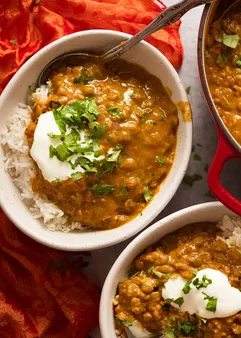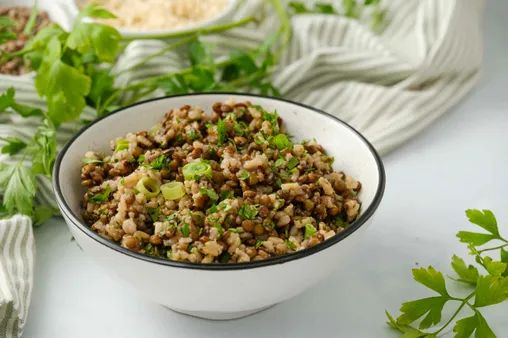Table of Contents
Embark on a culinary journey into the heart of Indian cuisine, where the secrets of rice and lentil cooking unfold. From the fluffy perfection of basmati rice to the hearty nourishment of lentils, Indian cuisine offers a symphony of flavors and textures that tantalize the taste buds. In this comprehensive guide, we will unveil The secrets of Indian rice and lentil cooking, empowering you to create authentic and delectable dishes that will transport you to the vibrant streets of India. Join us as we explore the art of perfect rice, delve into the versatility of lentils, and master the magic of spices. Discover traditional recipes, modern interpretations, and health benefits, and enhance your cooking skills with tips and tricks. Embrace the culinary heritage of India and unlock the secrets of rice and lentil cooking with Tauhuichiban.

The Secrets of Indian Rice and Lentil Cooking: A Culinary Masterclass
I. The Art of Perfect Rice: Unlocking the Secrets of Indian Cuisine
The Science of Fluffy Grains
- The secret to perfectly fluffy rice lies in selecting the right type of rice. Basmati rice is a long-grain rice that elongates beautifully when cooked, resulting in separate, non-sticky grains.
- Thoroughly rinse the rice before cooking to remove excess starch, which can make it gummy.
The Art of Cooking Rice
- Use the correct water-to-rice ratio. A good rule of thumb is 1 cup of rice to 1.5 cups of water.
- Bring the water to a boil, then add the rinsed rice. Reduce heat to low, cover, and simmer for 18-20 minutes, or until all the water has been absorbed.
- Once the rice is cooked, fluff it gently with a fork. Avoid stirring the rice while it is cooking, as this can break the grains and make the rice mushy.
Regional Variations in Rice Cooking
- In South India, rice is often cooked with coconut milk, creating a rich and flavorful dish.
- In North India, rice is typically cooked with spices and herbs, resulting in a more aromatic and flavorful dish.
Region | Cooking Style |
|---|---|
South India | Cooked with coconut milk |
North India | Cooked with spices and herbs |
Tips and Tricks for Perfect Rice
- For a more intense flavor, toast the rice in a pan with a little bit of oil or ghee before cooking.
- Add a pinch of salt to the water while cooking the rice to enhance its flavor.
- If you are cooking a large amount of rice, use a larger pot and adjust the water-to-rice ratio accordingly.
- Let the rice rest for a few minutes before serving to allow it to fully absorb the flavors.
Perfect Rice as a Culinary Canvas
- Perfect rice is not just a side dish; it can also serve as a base for a variety of flavorful dishes.
- Try using rice as a base for stir-fries, curries, and biryanis.
Rice Dish | Description |
|---|---|
Biryani | A layered rice dish cooked with meat, vegetables, and spices |
Pulao | A flavorful rice dish cooked with vegetables and spices |
Jeera rice | A simple yet flavorful rice dish cooked with cumin seeds |

The Art of Perfect Rice: Unlocking the Secrets of Indian Cuisine
II. Lentils: The Versatile Pulse in Indian Cooking
Lentils: A Culinary Gem
Lentils, the humble yet versatile pulse, hold a cherished place in Indian cuisine. A staple ingredient for centuries, lentils offer a symphony of textures, flavors, and nutritional benefits that have captivated taste buds across the subcontinent. Their adaptability shines through an array of dishes, from hearty soups and curries to comforting salads and savory snacks.
Read more about the health benefits of Indian herbs and spices
The Health Benefits of Lentils
Beyond their culinary appeal, lentils pack a punch of nutritional value. Rich in protein, fiber, and essential minerals, they contribute to a balanced diet. Lentils are a valuable source of iron, aiding in red blood cell production, and folate, crucial for cell growth and development. Furthermore, their low glycemic index helps regulate blood sugar levels, making them a suitable choice for those managing diabetes.
- High in protein and fiber, promoting satiety and helping manage weight
- Rich in iron, supporting red blood cell production and preventing anemia
- Excellent source of folate, vital for cell growth and development

Lentils: The Versatile Pulse in Indian Cooking
III. The Magic of Spices: Enhancing the Flavors of Rice and Lentils
In Indian gastronomy, spices are the indispensable alchemists that transform ordinary ingredients into culinary masterpieces. Their enchanting powers awaken taste buds, evoke emotions, and transport diners to a realm of flavor exploration. One of the most captivating marriages in Indian cuisine is that of rice and lentils—two humble staples elevated to new heights by the masterful blend of spices.
Spices are not mere flavor enhancers; they are culinary magicians that possess medicinal properties. Take turmeric, the golden spice revered in Ayurveda for its anti-inflammatory and antioxidant qualities. Its vibrant hue and earthy aroma add warmth and depth to dishes. Cumin, with its nutty and slightly earthy flavor, aids digestion and may reduce inflammation. Coriander, often used in powdered form, provides a citrusy freshness that balances the richness of rice and lentils.
Spice | Flavor Profile | Health Benefits |
|---|---|---|
Turmeric | Earthy, slightly bitter | Anti-inflammatory, antioxidant |
Cumin | Nutty, earthy | Aids digestion, reduces inflammation |
Coriander | Citrusy, fresh | Balances flavors, aids digestion |
The intricate dance of spices in Indian cooking extends beyond the traditional trio. Fenugreek, with its slightly bitter and nutty flavor, adds complexity to dishes. Cardamom, with its distinctive sweet and aromatic notes, brings a touch of elegance. And red chili powder, used in varying degrees depending on the region, provides a fiery kick that sets taste buds ablaze.
The magic of spices lies not only in their individual attributes but also in their harmonious interplay. In the context of rice and lentils, spices become a symphony of flavors, each note complementing the other. The warmth of turmeric harmonizes with the nuttiness of cumin, while the freshness of coriander cuts through the richness of the lentil broth. The result is a culinary masterpiece that transcends the sum of its parts, a testament to the transformative power of spices.
IV. Essential Techniques for Mastering Indian Rice and Lentil Dishes
Indian cuisine is renowned for its aromatic spices, vibrant flavors, and diverse dishes. Among these, rice and lentil dishes hold a special place, offering a symphony of textures and flavors that tantalize the taste buds. Mastering these culinary delights requires a combination of skill, patience, and an understanding of essential techniques.
One of the most important aspects of cooking perfect rice is achieving the right texture. Whether you prefer fluffy basmati or soft and sticky jasmine rice, the key lies in the rinsing and soaking process. Rinsing the rice multiple times removes excess starch, preventing it from becoming gummy. Soaking the rice for at least 30 minutes allows the grains to absorb water, resulting in even cooking and a more flavorful dish.
Type of Rice | Soaking Time |
|---|---|
Basmati Rice | 30 minutes |
Jasmine Rice | 1 hour |
Brown Rice | Overnight |
When it comes to lentils, the secret to achieving a creamy and flavorful texture lies in the cooking method. Lentils can be cooked in a variety of ways, but the most common techniques involve simmering or pressure cooking. Simmering lentils over low heat allows them to absorb the cooking liquid gradually, resulting in a tender and flavorful dish. Pressure cooking, on the other hand, speeds up the cooking process and can help preserve the lentils' nutrients.
Spices play a crucial role in enhancing the flavors of Indian rice and lentil dishes. A well-balanced blend of spices can transform a simple dish into a culinary masterpiece. Common spices used in Indian cooking include cumin, coriander, turmeric, and garam masala. These spices are often tempered in hot oil or ghee before being added to the rice or lentils, releasing their aromatic compounds and infusing the dish with their distinct flavors.
Mastering the art of Indian rice and lentil cooking requires patience, practice, and a deep appreciation for the nuances of Indian cuisine. By following these essential techniques and experimenting with different spices and flavors, you can create authentic and delectable dishes that will transport you to the vibrant streets of India.
V. Conclusion
As we conclude our culinary journey through the secrets of Indian rice and lentil cooking, we hope you have gained invaluable insights and inspiration to elevate your cooking skills. The art of perfect rice, the versatility of lentils, and the magic of spices have been demystified, empowering you to create authentic and flavorful Indian dishes that will impress your family and friends. Remember, cooking is a journey of exploration and experimentation. Embrace the flavors of India, experiment with different spices and techniques, and let your creativity shine through. Whether you choose to recreate traditional recipes or embark on your own culinary adventures, the secrets of Indian rice and lentil cooking will guide you every step of the way. Continue to explore the vibrant world of Indian cuisine, and may your culinary creations be filled with the warmth and richness of this beloved cuisine.